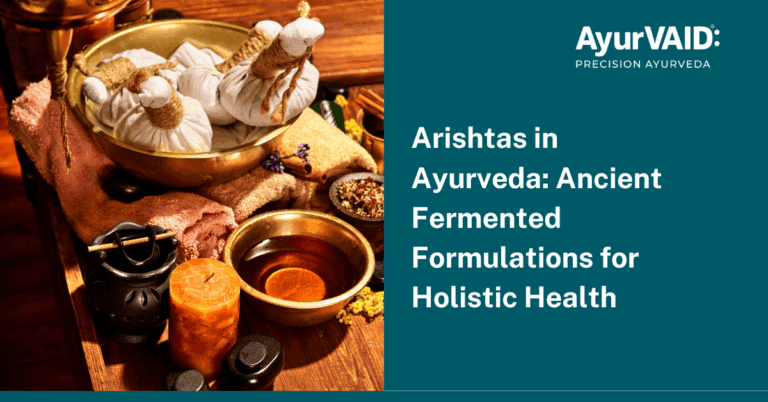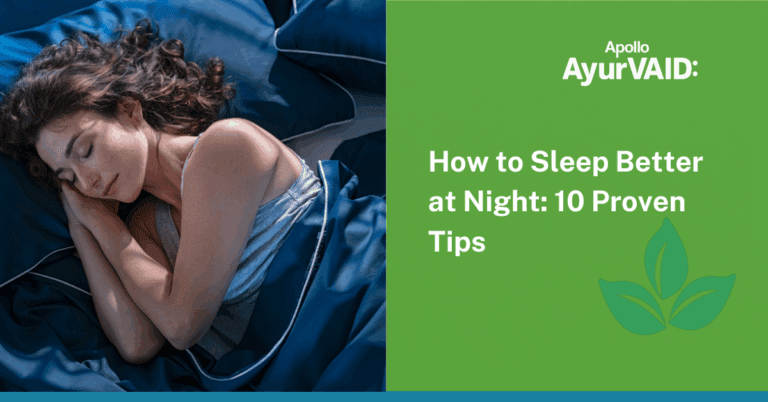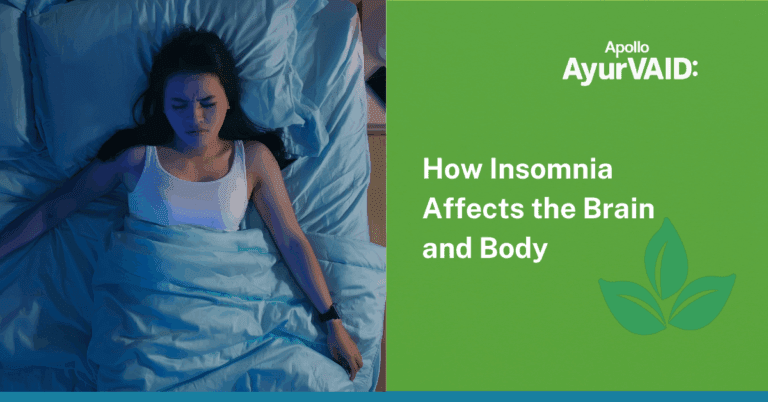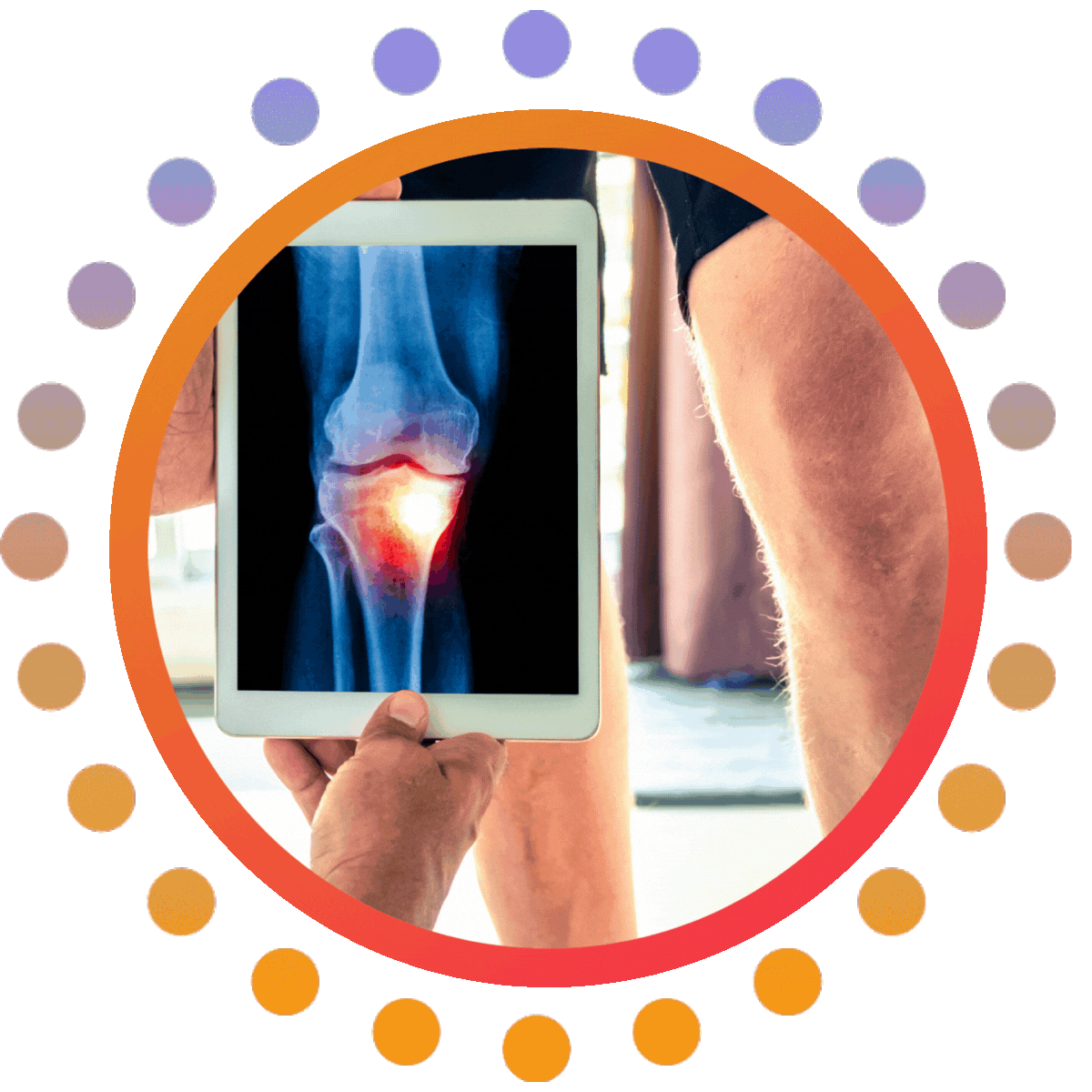
Web Stories
Step Into the Story: Explore Now
Osteoarthritis (OA) is a degenerative joint condition characterized by the breakdown of cartilage, the tissue that covers the ends of bones within a joint. This breakdown leads to joint pain, stiffness, swelling, and reduced flexibility. OA commonly affects weight-bearing joints such as the knees, hips, spine, and hands. As the cartilage wears away, bones may rub against each other, causing further damage and impacting the normal movement of the joint. OA is often associated with aging, previous joint injuries, overuse, genetics, and obesity, among other factors. It is a chronic condition that can gradually worsen over time but can be managed with various treatments to alleviate symptoms and improve joint function.
Ayurveda perceives OA as an imbalance in the body’s Vata dosha, primarily associated with movement. This imbalance leads to dryness, reduced lubrication, and degeneration in the joints, manifesting as pain, inflammation, and restricted movement. Ayurveda strives to enhance joint health, reduce pain, and improve overall well-being for individuals grappling with osteoarthritis.
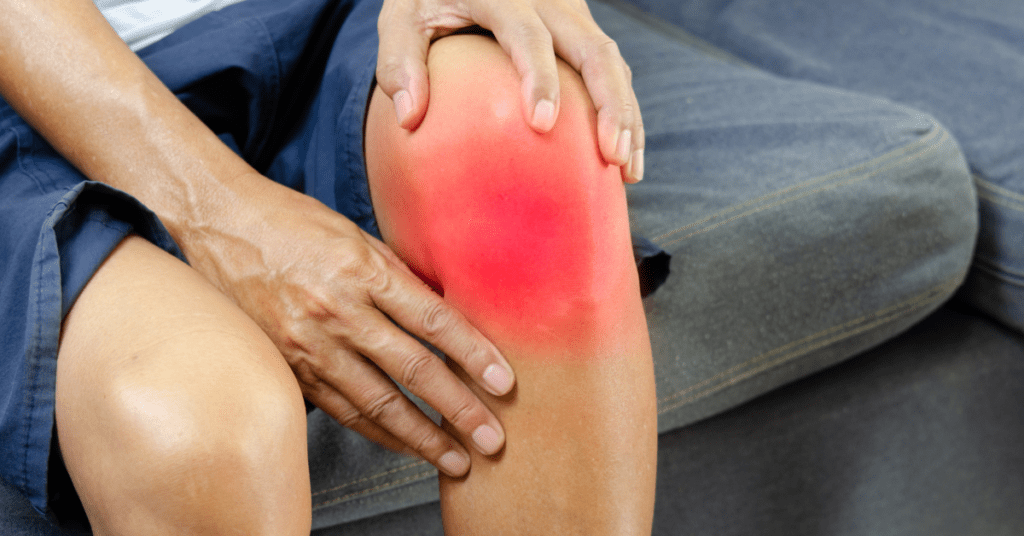
Assessment and Treatment of Knee Joint Pain in Ayurveda
In Ayurveda, Trividha Pariksha1 refers to the threefold examination or diagnostic methods used to evaluate an individual’s health status. These diagnostic techniques are fundamental in understanding the constitution, imbalances, and specific conditions affecting a person. Trividha Pariksha includes Darshana, Sparsha, and Prashna that is, Visual and Physical examination and asking condition-specific questions. Trividha Pariksha, when considering knee pain in Ayurveda, involves a threefold examination to assess the condition comprehensively:
- Darshana (Visual Examination): This entails visually inspecting the affected knee joint. Doctors observe for any swelling, redness, deformities, or asymmetry in the knee structure. They also examine the patient’s gait and movement patterns to identify signs of discomfort or altered mobility.
- Sparshana (Touch Examination): Through palpation, doctors assess the knee joint’s temperature, tenderness, and texture. They examine for localized warmth, tenderness on touch, and the presence of any lumps or irregularities around the knee area. This helps identify inflammation, joint fluid accumulation, or structural abnormalities contributing to the pain.
- Prashna (Questioning): Engaging in dialogue with the patient, doctors inquire about the onset of knee pain, its intensity, aggravating or alleviating factors, accompanying symptoms, and the impact on daily activities. Detailed questioning helps to understand the nature of the pain, its triggers, and any underlying factors contributing to the condition.

Causes of OA in Ayurveda
According to Ayurvedic principles, several factors contribute to the development of OA:
- Imbalance of Vata Dosha due to age: As one age, the natural wear and tear on joints contribute to Vata imbalance.
- Poor Digestion: Impaired digestion leads to the accumulation of toxins (ama) that affect joint health.
- Irregular Lifestyle: Irregular habits, erratic schedules, and inadequate rest can disturb the Vata dosha, impacting joint health.
Dietary Factors:
- Unsuitable Diet: Consuming foods that aggravate Vata, such as dry, cold, or processed foods, can worsen joint health.
- Improper Nutrition: Lack of nourishing foods and essential nutrients for joint support can contribute to OA.
Lifestyle:
- Overexertion or Overuse: Excessive physical activities or improper exercise can strain joints, aggravating Vata.
- Sedentary Lifestyle: Lack of movement and physical activity can also disturb the balance of Vata dosha.
Injury or Trauma:
- Physical Trauma: Past injuries or accidents affecting the joints can lead to imbalances in Vata and contribute to OA development.
Genetic Predisposition:
- Hereditary Factors: Genetic predispositions can influence susceptibility to joint issues, including OA, in some individuals.
Ayurveda Interventions for OA and Knee Pain:
After a comprehensive assessment of the patient’s constitution and presenting complaints, Ayurveda doctors plan a therapeutic approach, that involves pacifying Vata dosha or addressing associated factors. A generalised treatment includes:
- Herbal Formulations: Ayurvedic pharmacology offers herbal compounds rich in anti-inflammatory and analgesic properties. Personalised formulations considering the patient’s dosha imbalance and joint pathology are administered to alleviate knee pain. Specific internal medications targeting Vata dosha and joint health are prescribed in precise formulations to address knee pain at the root cause.
- External Therapies: Localized therapies like Janu Basti 2 (medicated oil pooling on the knee joint) and Pinda Sweda (herbal bolus fomentation) enhance joint lubrication, reduce inflammation, and restore mobility.
- Panchakarma Procedures: In severe cases, Panchakarma therapies like Basti (medicated enema) and Virechana (therapeutic purgation) are also recommended to eliminate toxins and rebalance aggravated doshas, offering relief from chronic knee pain.
Apollo AyurVAID’s Approach
Ayurveda addresses chronic conditions that go beyond mere symptom management. Ayurveda treats the root cause of arthritis, not just the symptoms with an approach that considers individual factors, and personalized treatments, including herbal medications and panchakarma, to enhance the quality of life. Ayurveda treatment for arthritis works towards restoring lost functionalities and reducing joint inflammation, which accelerates the healing process. Ayurveda’s non-invasive approach aims to improve joint health without the necessity for surgical interventions or reliance on painkillers, offering a whole-person approach toward sustained well-being and pain management.
At AyurVAID, a protocol-driven approach and methodologies are embraced to directly treat the root causes of diseases. Through personalized treatment plans for pain management and overall health enhancement, patients experience the power of precision Ayurveda care. The guidance provided by our expert Ayurveda physicians is pivotal, emphasizing adjustments in daily habits, dietary modifications, and posture improvements to foster better well-being, reducing reliance on pain medications and lessening the need for surgeries like Total Knee Replacement (TKR).
References:
- Charaka Samhita: Sutrasthana: Chapters 8 to 12, Chikitsasthana: Chapters 5 to 8
- Charaka Samhita: Chikitsasthana: Chapter 28




